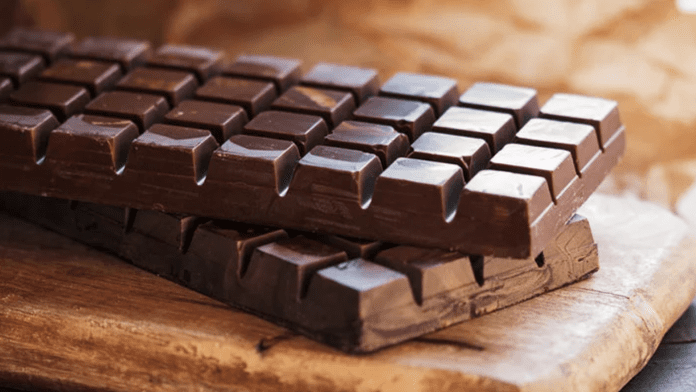The chocolate bar chart depicts a notable growth trend, tracing its roots back to 4,000 years ago when early chocoholics in ancient Mesoamerica (present-day Mexico) integrated the cacao plant into their rituals and medicinal practices. This ancient civilization held a profound belief in the seeds, recognizing them as a bestowed gift from the god of wisdom.
Many centuries later, the Mayans, succeeded by the Aztecs in the 15th century, held the belief that chocolate was a divine gift. The fusion of divinity, healing properties, and exquisite taste contributed to the gradual dissemination of chocolate worldwide. As of 2023, the global chocolate market size stands at approximately $127.7 billion. Projections indicate a compound annual growth rate (CAGR) of 4.4% from 2024 to 2032, with an anticipated valuation of $165.4 billion by 2032. In 2021, Mondelez emerged as the leading chocolate confectionery firm in India, commanding a market share close to 60%, followed by Nestlé with a share of about 15%.
In 2022, the overall market size of chocolates in India amounted to INR 15,512 crore.
Euromonitor projects that the estimated growth of the market will reach INR 23,700 crore by 2027.
“Chocolate is a superfood when it is unprocessed,” says Professor John Dumay, Macquarie Business School, Chocolate Scorecard researcher. He adds, “Commercially, the best is dark chocolate of 70% or greater cocoa.
As chocolate undergoes more processing and is combined with other ingredients, its superfood qualities diminish. While milk chocolate remains prevalent in India’s consumption, dark chocolate currently holds around 10% of the market share. However, it is anticipated to be the fastest-growing segment, driven by a growing emphasis on awareness and wellness.
In response to consumer preferences, several local brands are now manufacturing premium dark chocolate, particularly in a post-pandemic world where health is a prevailing concern. Dr. Bharat Rakshak DDS, MDS, based in California, suggests that high-quality dark chocolate can offer antioxidants, enhance heart health, and potentially elevate mood, thanks to compounds such as flavonoids and theobromine.
“It has anti-aging properties, and has also been shown to have a number of other health benefits, including improved heart health, reduced inflammation, and improved cognitive function,” he says.
According to industry analysis and consulting firm Mordor Intelligence, there is a significant surge in demand for dark chocolate in the Indian chocolate market.
According to Jayen Mehta, Managing Director of Amul, the market for this product in India is expanding, driven by a growing awareness of its potential health benefits.
He says, “Amul has pioneered the dark chocolate revolution in India. We have a range starting with 55% dark and moving up to 75%, 90% and 99% dark. We have a wide range in flavours and due to this, the category is growing in India.”
Currently, chocolate accounts for 3% of the annual sales of the Gujarat Cooperative Milk Marketing Federation (GCMMF). Although its presence in the broader chocolate market stands at 10%, Jayen Mehta notes that Amul takes the lead in the dark chocolate segment.
He mentions that Amul’s dark chocolate range is favored by various demographics, including young adults focusing on a balanced diet, fitness enthusiasts and athletes seeking energy and antioxidants, and individuals with specific dietary restrictions like those following low-sugar or keto diets.
“It is one of the highly-rated superfoods and we have been marketing high cocoa content chocolates as a healthier and more premium option in the market, catering to consumers seeking a more indulgent yet mindful treat,” he adds.
From a branding standpoint, labeling chocolate as a ‘superfood’ faces constraints in India.
“While from a marketing perspective, it is a superfood, we need to also be aware that there is no such category under our food safety regulator FSSAI,” Mehta shares.
According to FSSAI, the FSS Act 2006 does not provide a specific definition for ‘superfood,’ preventing any product from being officially classified as such. Regulation 2.7.4 under the Food Safety and Standards (Food Products Standards and Food Additives) Regulations, 2011, outlines standards for chocolate. FSSAI lacks information indicating a notable trend of chocolate brands in India adopting healthier alternatives.
There is no category specified for selling healthy chocolates under FSSR,” a spokesperson said.
Internationally, the term ‘superfood’ lacks an official definition from regulatory authorities in significant consumer markets, including the USFDA.
In 2007, the European Union banned the marketing of products as ‘superfoods’ unless accompanied by a specific authorized health claim backed by credible scientific research.
Nevertheless, dark chocolate continues to don the cape of a superfood.
“With high cocoa content it is often considered a superfood due to its potential health benefits when consumed in moderation,” says Dr Rakshak.
He says that to get the superfood health benefits, the chocolate needs to have at least 70% cocoa content. “This usually means more antioxidants and less sugar,” he says.
Vedika Premani, a clinical dietitian at Sir HN Reliance Foundation Hospital, explains that an ingredient can be deemed a superfood if it meets certain criteria, including being rich in compounds like bioactives, vitamins, and minerals. Chocolate satisfies all these criteria.
“It is rich in antioxidants like magnesium, zinc, manganese and selenium and is known to be beneficial for mental and physical well-being. It is rich in flavanols which helps in increasing blood flow to muscles and brain,” she says.
“Flavanols are plant compounds that have been shown to have a number of health benefits, including anti-aging properties,” shares Dr Rakshak. According to a 2007 report by medical journal The Lancet, flavanols improved coronary vascular function in 11 hearttransplant recipients compared with patients taking a cocoa-free control chocolate.
Dr Ruchi Rai, dietitian at SRV Hospitals shares that “flavanols stimulate nitric oxide production, enhancing blood flow and relaxing arteries, reducing blood pressure.” Dark chocolate’s nutrient content, including manganese, magnesium, iron, selenium, copper, zinc and potassium, makes it an ideal aftermeal treat, she observes.


